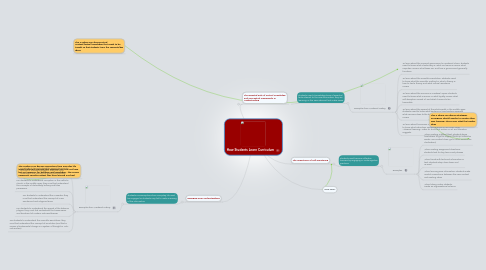
1. This is where you discuss actual content/factual knowledge that needs to be taught so that students learn the concepts/big ideas
2. The Essential Role of Factual Knowledge and Conceptual Frameworks in Understanding
2.1. Students need a knowledge base of essential facts relevant to the new information they are learning, or the new ideas will not make sense
2.1.1. Examples from Medieval History
2.1.1.1. To learn about the imperial government in medieval China, students need to know what meritocracy is, what civil-service means, what nepotism means, what taxes are, and how a government generally functions
2.1.1.2. To learn about the Scientific Revolution, students need to know what the scientific method is, what a theory is, how to test a theory, and what cultural resistance means
2.1.1.3. To learn about the Samurai in medieval Japan, students need to know what a warrior is, what loyalty means, what self-discipline consist of, and what it means to be honorable
2.1.1.4. To learn about the spread of the Black Death in the middle ages, students need to know what bacteria is, how bacteria spreads, what necrosis does to the body and what psychological impact means
2.1.1.5. To learn about humanism in the renaissance, students will need to know what naturalism and perspective in art mean, what "classical learning" refers to, and what realism in art and literature suggests
3. This is where you discuss conceptions from everyday life (mostly informal learning) that students may/may not have but are necessary for building new knowledge - this is NOT necessarily specific content they have learned in school
4. Engaging Prior Understandings
4.1. Students Preconceptions from everyday life must be engaged or students may fail to make meaning of the information
4.1.1. Examples from Medieval History
4.1.1.1. For students to understand the rise of democratic through in medieval England, they first must understand the concept of group participation
4.1.1.2. For students to understand corruption in the Catholic church in the middle ages, they must first understand the concepts of dishonesty, bribery and false persuasion
4.1.1.3. For students to understand the Crusades, they must first understand the concept of mass excitement and religious fervor
4.1.1.4. For students to understand the spread of the bubonic plague, they must first understand the transmission and treatment of modern sickness/disease
4.1.1.5. For students to understand the Scientific Revolution, they must first understand the concept of revolution (and that is means a fundamental change in a system of thought or rule, not warfare)
5. New Topic
6. This is where you discuss strategies STUDENTS should employ to monitor their own learning. This is NOT what the teacher does
7. The Importance of Self-Monitoring
7.1. Students must become effective learners by engaging in metacognitive practices
7.1.1. Examples
7.1.1.1. When reading a difficult text, students know how/where to go for support (look up unfamiliar words, use context clues, go to other sources for clarification)
7.1.1.2. When reading assignment directions, students look for key terms and phrases
7.1.1.3. When faced with technical information in text, students stop, slow down and re-read
7.1.1.4. When learning new information, students make mental connections between the new content and existing ideas
7.1.1.5. When taking notes, students create an organizational scheme
